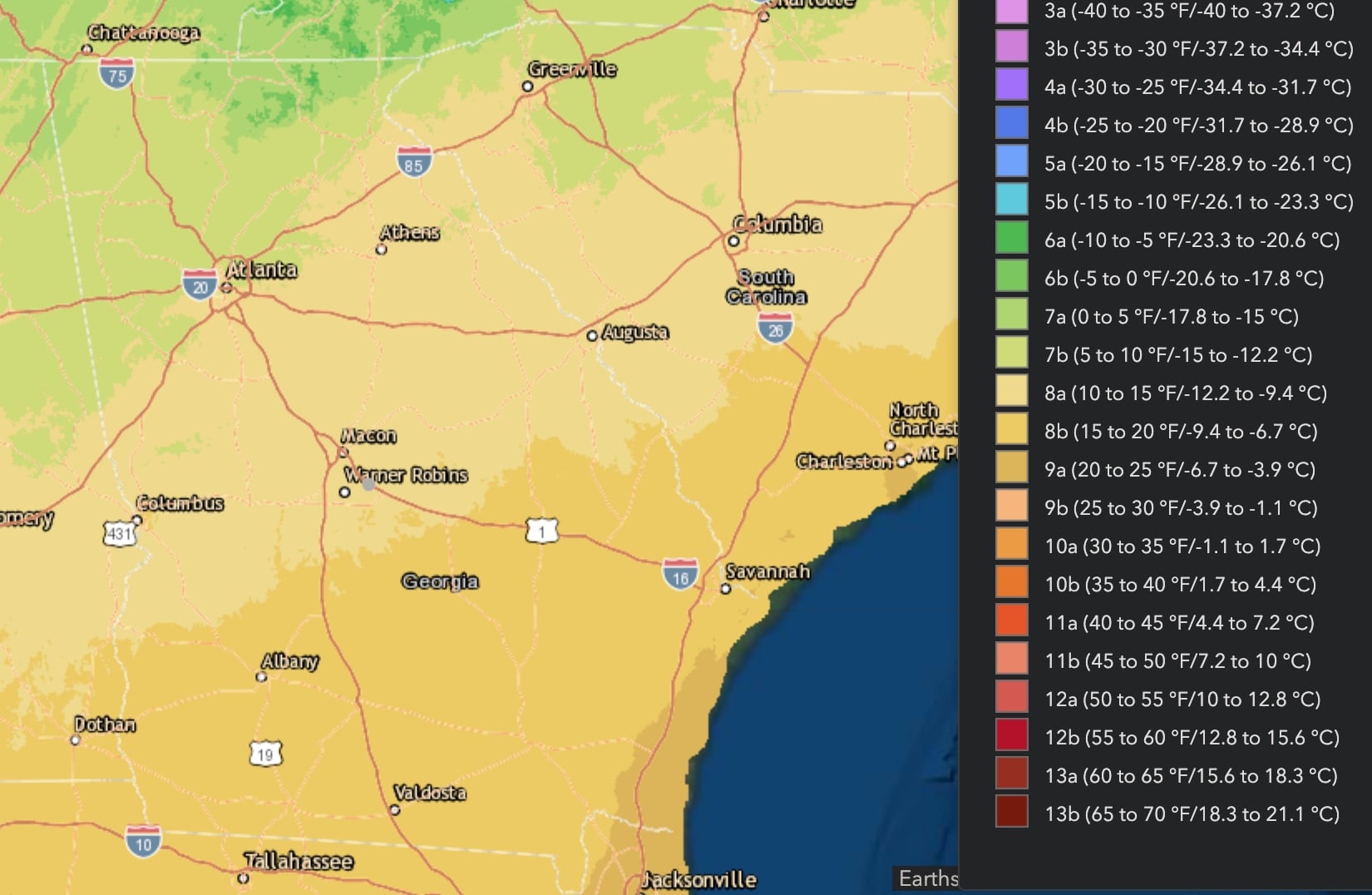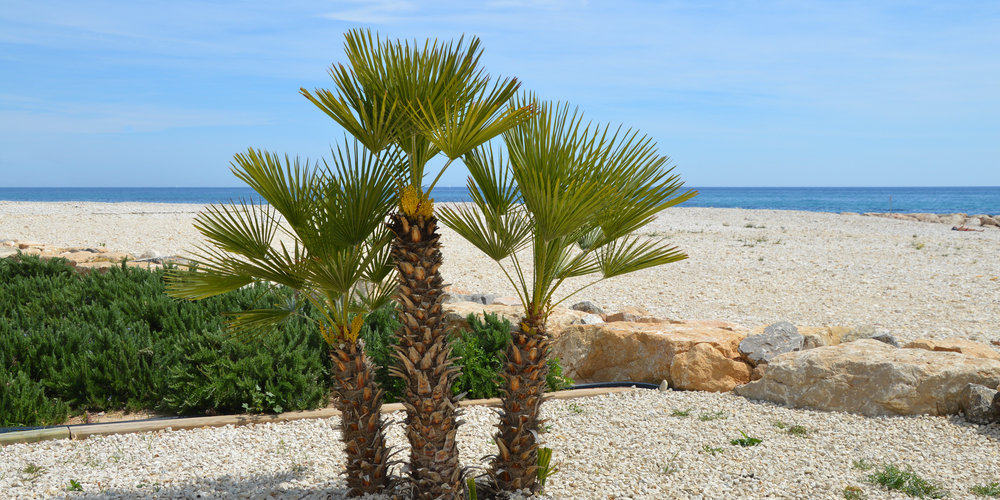When most people think about palms, the first place that comes to their minds is southern California, Hawaii, Florida, or Georgia’s coastal islands. However, people don’t have to live in any of the above locations to enjoy palm trees. They grow really well in Georgia.
While Georgia isn’t as warm as Florida, it’s still a State where cold hardy palms grow, with some even growing as far up as North Carolina, which is in the hardiness zone 6. Georgia has a subtropical climate with mild winters, hot summers, and adequate humidity. The Atlantic Ocean often determines the state’s weather.
Georgia Climate

The state of Georgia is in the hardiness zone 6a to 9a, which means that your palm trees are more likely to survive the winters and grow healthy and strong the further you move south. Georgia’s average temperature in January is 4˚C or 39˚F, and in July, it’s 26˚C or 78˚F. The highest recorded temperature was 44˚C or 112˚F, while the lowest recorded temperature was -27˚C or -17˚F.
Georgia often experiences dry winters, hot, humid summers, and occasional thunderstorms. The state does experience its share of tropical storms and tornadoes. However, what remains to be answered is, “How do you grow palms in Georgia?”
Growing Palms in Georgia
A huge percentage of Georgia is in the hardiness zone 9. If you live in a location on the hardiness zone 9, you’ll need to purchase palm trees that are tolerable to colds in zones 7 or 8. Palm trees adapted to zones 7 and 8 can handle the cold in zone 9 effortlessly, and you won’t have to worry about your plants dying on you during the winter.
There are very few palm trees that can survive hardiness zones six or below. The only palm tree that can tolerate colds of up to 0˚F is the Saw Palmetto Palm Tree native to Georgia. You could grow this type of palm tree if you live in locations within the hardiness zone 7a and over. What palm trees can you grow in other hardiness zones?
The Windmill Palm
The windmill palm (common to Atlanta) is one of the hardiest palm trees and has been known to grow all around Georgia and survive in temperatures as low as -10˚F. The plant looks nice when planted in groups of five or three to accent a courtyard entrance or the corner of a building.
It’s a great addition to swimming pools and other water features because of its tropical vibe. Plus, it doesn’t drop any litter like other deciduous variants. It has fan-shaped leaves, grows to a 20 to 25-foot height, and has a brown trunk covered with fibers.
Needle Palm
The needle palm is a clumping, deep-green palm tree with fan-shaped leaves. It’s commonly found in the southeast; however, it’s become endangered due to the destruction of its habitat. It has needle-like spines that aren’t usually problematic until it’s time for some pruning.
The plant requires little care once it takes root and can survive temperatures as low as -5˚F. Surprisingly, the plant does way better inland than on the coast since it doesn’t like salt spray. It has a peculiar growth habit where it grows 5 ft tall and spreads wide, filling a huge space.
Saw Palmettos
This is a native species common to Georgia along highways and grows to 5 or 10 ft in height, occasionally forming a trunk. Its variant with silver foliage is hugely valuable among collectors.
The plant’s berries are collected from the wild, processed, and placed in capsules to be sold by pharmaceutical industries for treating prostate cancer. You shouldn’t grow it in the Piedmont area if you don’t have special cold protection.
Dwarf Palmettos
The Dwarf Palmettos are native to the southeast’s flood plains. They grow 4 to 5 ft high with wide blue-green or green fronds. It isn’t as hardy as the needle palm; however, it’s been known to hold its own against winters that were as cold as 10˚F. The best place to plant dwarf palmettos is in moist and sunny locations.
Are There Palm Trees in Georgia? Conclusion
We didn’t mention all palms you could grow in Georgia, but we did mention those that will be easiest to grow. Growing palms in extremely cold locations is challenging. You’ll need to take extra care and protect them from the cold by covering them or taking them indoors.
Related article: Indoor palm trees

